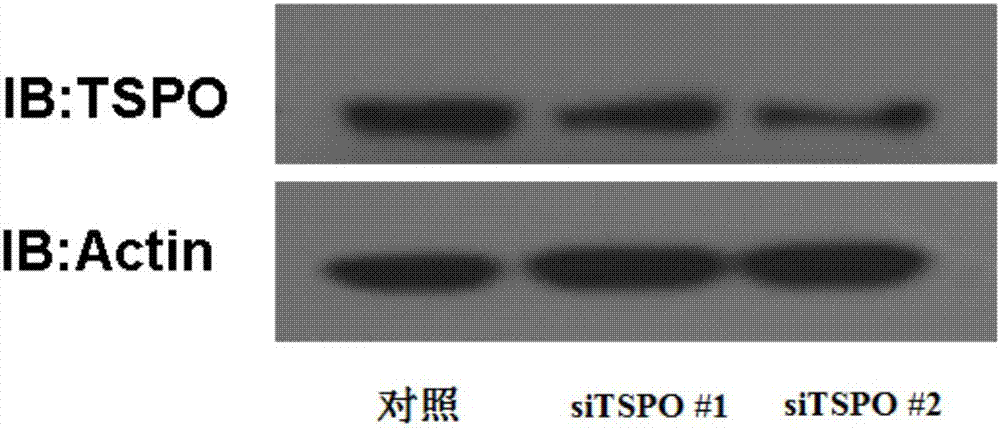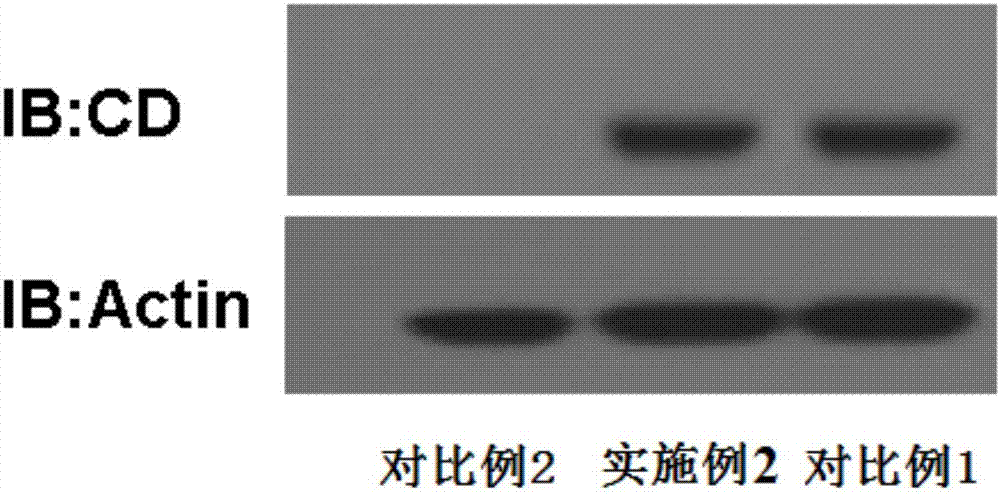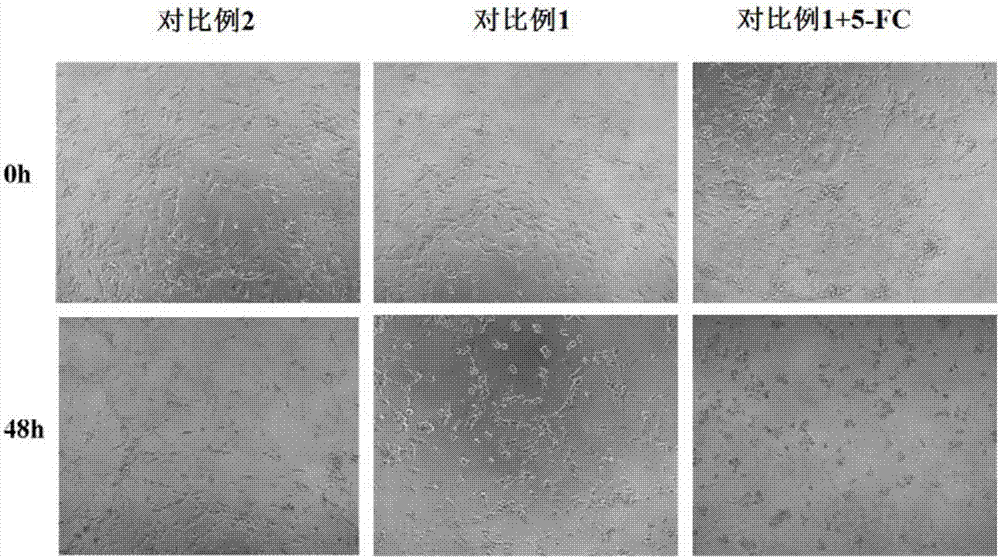Application of TSPO (Translocator Protein) in treatment of brain glioma and recombinant herpes simplex virus as well as preparation method and application of recombinant herpes simplex virus
A herpes simplex virus and glioma technology, applied in the field of genetic engineering, can solve the problems that the effectiveness of the HSV-1 oncolytic virus cannot meet the treatment needs, the number and replication ability of the oncolytic virus are low, and the efficacy of the oncolytic virus is low. , to achieve good application prospects, improve killing efficiency, and reduce side effects
- Summary
- Abstract
- Description
- Claims
- Application Information
AI Technical Summary
Problems solved by technology
Method used
Image
Examples
Embodiment approach
[0028] According to a preferred embodiment of the present invention, the vector is a herpes simplex virus that has deleted the genes encoding ICP34.5 and ICP47, and the insertion site of the foreign nucleotide sequence is the deletion of the genes encoding ICP34.5 on the vector. and / or the location of the ICP47 gene.
[0029] According to the present invention, in order to effectively independently translate and express the foreign nucleotide sequence, the foreign nucleotide sequence of the present invention preferably includes a promoter and a termination sequence, and the foreign nucleotide sequence preferably includes A promoter, an optional start codon and a termination sequence (which may be a stop codon), and an optional linker sequence and / or a PolyA sequence, in such preferred cases, when the recombinant herpes simplex virus infects a host cell and When expressing its own gene, it can transcribe an independent and complete target mRNA fragment.
[0030] In another pre...
Embodiment 1
[0059] This example is used to illustrate the construction of the recombinant herpes simplex virus provided by the present invention.
[0060]According to application number 2004100064921, the ICP34.5 gene and the ICP47 gene knockout of wild-type HSV-1 virus (the GenBank number of its gene sequence: NC_001806, the same below) are knocked out by the method described in the patent application of authorized announcement number CN1283803C, and in HSV The ICP34.5 gene knockout of -1 virus is inserted into an exogenous nucleotide sequence, but the difference is that Vero cells are used as host cells in this embodiment. The exogenous nucleotide sequence includes: U6 promoter, shTSPO#2, termination sequence (TTTTTT) from the 5' end to the 3' end. Sequencing at Suzhou Jinweizhi Company confirmed that the foreign nucleotide sequence was correctly inserted into the herpes simplex virus vector to obtain the recombinant virus vector. Successfully constructed recombinant viral vectors were...
Embodiment 2
[0062] This example is used to illustrate the construction of the recombinant herpes simplex virus provided by the present invention.
[0063] According to the application number 2004100064921, the method recorded in the patent application of the authorized announcement number CN1283803C will knock out the ICP34.5 gene and the ICP47 gene of the wild-type HSV-1 virus, and, at the position of knocking out the ICP34.5 gene of the HSV-1 virus Insert the artificial chemically synthesized exogenous nucleotide sequence 1, and insert the artificially chemically synthesized exogenous nucleotide sequence 2 at the position of the knockout ICP47 gene of the HSV-1 virus. The difference is that this embodiment uses Vero cells as the host cell. Wherein, the exogenous nucleotide sequence 1 includes: U6 promoter, shTSPO#2, and termination sequence (TTTTTT) from the 5' end to the 3' end. The exogenous nucleotide sequence 2 includes in sequence from the 5' end to the 3' end: CMV promoter, gene ...
PUM
| Property | Measurement | Unit |
|---|---|---|
| Titer | aaaaa | aaaaa |
Abstract
Description
Claims
Application Information
 Login to View More
Login to View More - R&D
- Intellectual Property
- Life Sciences
- Materials
- Tech Scout
- Unparalleled Data Quality
- Higher Quality Content
- 60% Fewer Hallucinations
Browse by: Latest US Patents, China's latest patents, Technical Efficacy Thesaurus, Application Domain, Technology Topic, Popular Technical Reports.
© 2025 PatSnap. All rights reserved.Legal|Privacy policy|Modern Slavery Act Transparency Statement|Sitemap|About US| Contact US: help@patsnap.com



